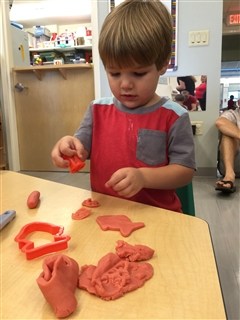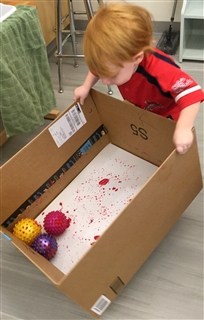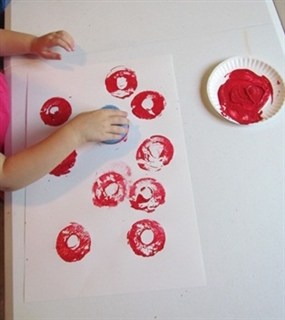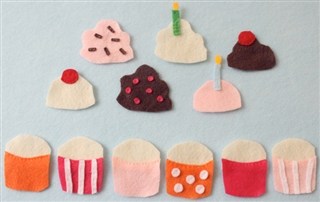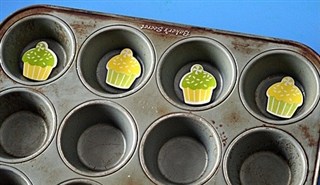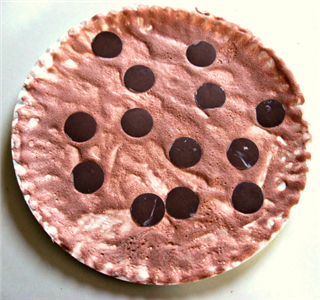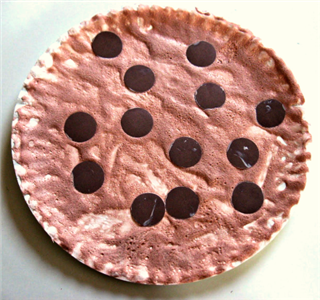Materials
Muffin pan
Cupcake Foam Stickers
Directions
Provide cupcake foam stickers. For younger children, you may want to limit the stickers to two different kinds. For older preschool age children, provide a variety of stickers to encourage more interesting and challening patterns. To introduce the idea of a pattern to your child, start with just two different stickers and place them in the muffin pan using an ABAB pattern. Invite your child to copy the same pattern in the row underneath. Once your child has mastered copying a pattern, ask him to extend your pattern by asking what comes next in the pattern. This will help you determine if you child understands that a pattern repeats. The last step is generating his own patterns and learning how to make more complex patterns using 3, 4, or more different objects.
Understanding the concept of patterns help children see patterns in numbers, literacy, music, and all around them!




